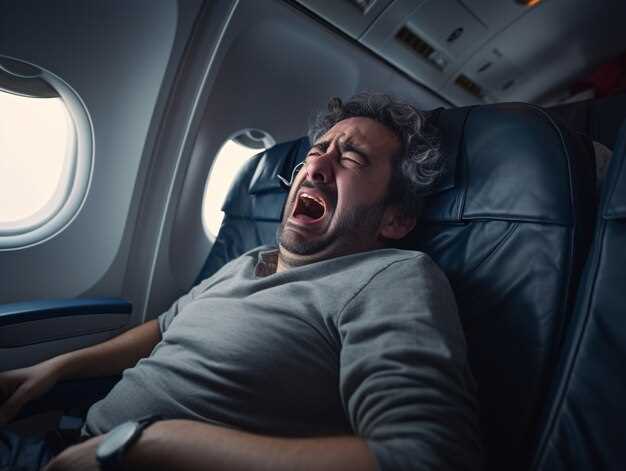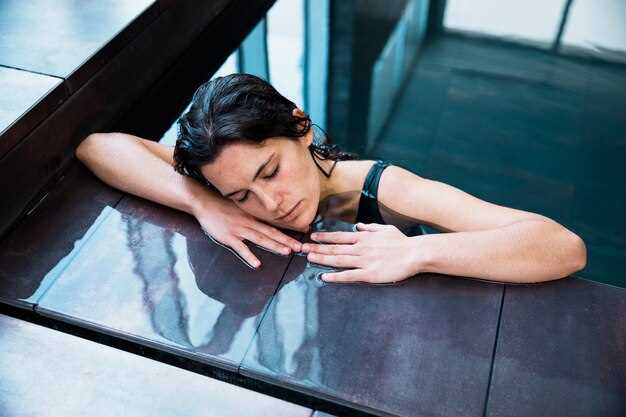Start with 90 minutes of bright light exposure within two hours after waking; target 10,000 lux via a light box or morning sun. This helps shift your internal clock closer to the local schedule within this country, reducing delay on arrival.
For eastern shift toward this country, prioritize morning light; for pacific routes, prefer late afternoon light. Create a simple cycle: wake, expose to light, then stay outdoors until local dusk. These moves mean a simple rhythm to keep your body aligned. Clinicians recommend this approach. Meditation remains optional though helpful for yourself.
Keep meals aligned with local times; choose caffeine timing: one cup after waking in local time; then avoid late doses that disrupt the night period. This is effective for stabilization of alertness, especially with lots of days of practice. assistance stays via reliable routines; Meditation remains optional though helpful; stay mindful of your body’s cues, for yourself.
classic rhythm for routes through tokyo or york: Day 1 wake with local dawn; 60–90 minutes light in morning; Day 1 meals match local times; Day 2 wake 30 minutes earlier; continue this second-day pattern. multiple travelers report steadier attention, clearer mood, longer stamina after stay with this routine across multiple nights, including the night period.
Actionable steps to reset quickly on arrival in China

Set your body clock to local hours within 2 hours of landing; seek bright daylight immediately to anchor your rhythm; hydrate; limit alcohol; take a short in-flight rest if needed to ease grogginess.
- Expose eyes to daylight within the first hour after landing; aim for 20–30 minutes of direct sun; a brisk outdoor walk toward open sky boosts awake alignment.
- Hydrate with 500–750 ml water on arrival; avoid alcohol; limit caffeine to the morning hours; keep dinners lighter to prevent evening drowsiness.
- Create a dark quiet room; blackout curtains; eye mask; cool comfortable temperature; headphones for white noise to support rest after dark.
- Take a 10–15 minute outdoor walk after landing; daylight exposure reinforces wakefulness during the first daylight block; avoid long screen use; keep moving.
- Open a ready schedule on your phone; photo of itinerary; set task reminders; beforehand prepare a simple plan that fits local hours; trust the plan.
- from dulles to Beijing, western travellers including british nationals benefit from direct daylight access; each journey is longer than domestic hops; window seat when possible; keep alert with light activity; avoid heavy meals on this leg.
- Pack a compact rest kit: eye mask, earplugs, headphones; keep within reach; cover your first daytime block with a short stroll; photo of your plan for later helps keep focus.
- Schedule a brief nap only if needed; never exceed 20 minutes; longer rests dull daytime alertness on arrival; instead ride the local daylight awake window until night.
- Track expenses for rest amenities; reimburse eligible purchases through employer or travel policy; spend on approved items; keep receipts.
They will feel steadier quickly with routine cues; improved rhythm emerges with care; trust daylight anchors; keep it simple.
Open hours for hotel check-in, airport lounges, rail connections; use these windows to maximize daylight exposure; straight rest blocks.
A huge improvement in daytime alertness follows this routine; you will notice improved focus; awake steadiness grows; they were not natural; care for your body clock yields real results.
Get bright morning light within 60 minutes of waking to advance your body clock

Step outside or sit near a bright window within 60 minutes of waking; exposure of eyes to daylight for 20–30 minutes. Outdoor sun typically delivers 3,000–10,000 lux depending on weather, part of day, season. A very bright cue shifts the circadian drift toward earlier times; this critical step sets the next day’s rhythm. For arriving travelers from northern climates or british routes, morning light is a powerful starter.
Option for airline travelers arriving in a new zone: guided routines pair light exposure with brief movement soon after waking. If you depart from home toward eastern destinations, you may arrive at a destination with dawn breaking; arrange the next morning’s light to match local dawn; the same cue becomes fully effective.
Device substitute: a high-lux light box delivering 2,500–10,000 lux at 20–30 cm for 20–30 minutes provides a robust cue when outdoors is not feasible. Place the unit at eye level, at comfortable distance; avoid glare. meditating or slow breathing after exposure can help steady mood and reduce tension.
Next-day schedule tips: repeat exposure next morning; keep the routine guided whenever possible. For travelers departing from home toward a culture that favors later hours, this option still creates a steady shift.
Long-term plan: maintain the same wake hour across trips to minimize drift; choose morning light as a core tool, returning home with a more comfortable adjustment. This approach works for many people if you consistently apply it next times.
Schedule outdoor activities during local morning hours to maximize daylight exposure
Begin outdoor activity in the local morning window, aiming for the first light within two hours after sunrise.
Morning daylight shifts the biological clock; this improves alertness later in the day, easing adaptation to a new schedule.
Practical blocks: 20–30 minute brisk walks; 40–60 minute easy strolls through parks, greenways, or waterfront paths. Years travelled show that morning exposure builds rhythm stability; between destinations, different routes keep routines fresh. In the south, seek shaded routes to avoid heat, then continue with a longer walk while body stays fresh.
arriving in tokyo; travellers from australia, zealanders, other zones might plan lots of outdoor hours; booking platforms help secure routes, while google maps pinpoints green routes near white facades; create a quick album of preferred morning routes. Each walk departs in the hour after dawn. Carry mtstock shade cloth if sun is strong to maintain comfort.
If baggage claim, medical checks interrupt, baggage handling, or queues interrupt morning blocks, reduce duration; later, extend as normal.
For additional guidance on circadian biology visit the NIH page: NIH Circadian Rhythm Disorders.
Combine sunlight with movement: take a 15–30 minute outdoor walk after waking
Start earlier by stepping outside as soon as you rise; 15–30 minutes of outdoor walk jump-starts your body clock via light cues, movement, routine.
- First, step outside within minutes of waking; seek bright sun exposure to shift your internal rhythm quickly.
- Keep pace simple; a brisk stroll for 15–30 minutes works; travelled overnight makes this routine the simplest way to recalibrate.
- Surprisingly, mild weather soon yields benefits; 15–30 minutes outdoors still supports rhythm through light cues and movement.
- During the walk, face the light source; tilt your head slightly to capture sun in your eyes briefly; a gentle breeze boosts mood; reduces noise exposure; supports digestion.
- After finishing, consider a quick stretch session; this supports circulation, digestive comfort.
- For transit days, keep the same morning walk accessible; a small note of assistance from a trusted companion helps ahead of flights or meetings.
- Post-walk, have a simple meal with protein, fiber; this stabilizes energy, supports digestive rhythm, reduces mild fatigue later in day.
- Weather permitting, continue this routine outdoors; otherwise use bright indoor lighting with a similar timing anchor to keep adapting.
- If you travelled from distant places such as Alaska, Australia, or during long layovers at Dulles, maintain the habit; studiogetty imagery can support focus during morning transitions; calm transitions become highlights of your routine.
- Keep care reminders handy: stay hydrated, wear a hat, choose quieter routes, avoid overheated environments; this approach improves your back comfort while adapting.
- Insurance coverage that includes travel health can support this simple practice during long trips; 15–30 minutes outdoors retains benefits.
Limit evening light and blue-light exposure to help melatonin rise
Limit evening blue-light exposure; replace white lighting with warm amber or red-tinted sources 2–3 hours before bedtime. Use multiple lights at low intensity to give a comfortable glow through the room; avoid bright ceiling lamps. If screens are unavoidable, activate a warm filter; wear blue-blocking glasses. When visiting, carry a portable amber lamp; choosing appropriate lighting helps internal rhythms align with the local schedule.
Plan the routine in advance: set a consistent bedtime; trim wake-up by 15–30 minutes per day to dial in. When visiting another culture or traveling to asia, spread exposure to daylight early; outdoor activity during daylight supports circadian cues. Avoid loud noise after sundown; cancel intrusive sounds where possible. Dress in soft clothing; keep the skin cool, promoting relaxation. Choose white lighting only during daytime; switch to warmer bulbs after dark. These steps are likely to help with bedtime alignment for home or hotel rooms. These tips suit travelers who’ve traveled widely.
Integrate a wind-down sequence: meditating or mindful breathing for 5–10 minutes signals the body to calm. Think of this as a transition from activity to rest; avoid stimulating screens or bright conversations. At home, keep the room dim, close blinds, use soft textiles such as clothing that promotes comfort. These measures are likely to boost melatonin rise; weve observed similar results when travelers have quiet rooms, maintain a consistent routine. Since these steps are practical, they remain helpful during visiting and while staying away from home.
| Action | Timing / Notes |
|---|---|
| Dim lighting | 20–40 lux in the evening; amber or red-tinted bulbs |
| Blue-light control | Blue-blocking glasses after sundown; screen settings to warm colors |
| Light sources | Use green or warm lights; avoid white overhead unless daytime |
| Wind-down routine | Begin 2–3 hours prior; include meditating or breathing |
| Environment | Block outside noise; blackout curtains when needed |
| Clothing | Choose breathable clothing; comfortable layers, prevent overheating |
| Schedule consistency | Maintain a fixed bedtime across locations; plan ahead |
If outdoor light isn’t available, use a high-lux light source to simulate morning daylight
Begin with a powerful 10,000 lux light box at eye level; use for 20–30 minutes within the first two hours after waking; position about 30 cm from eyes; maintain a right distance; tilt slightly toward the eyes; choose a model with stable output; clear safety guidance; non-refundable warranty; these lights deliver consistent cues.
Five different strategies exist; listen to body responses; check results with a photo log; middle exposure time may suit slower rhythms; the best plan uses second increments for those shifting time zones; those traveling east might see faster alignment.
Temperature around 20–22 C supports comfort; schedule sessions within timing windows; those in the south or east zones might adjust by latitude; africa shows strong influence from morning cues; australians research confirms quicker alignment with consistent morning exposure; dulles experiments provide practical benchmarks; rest remains a useful companion to light sessions; drinking prior to exposure reduces responsiveness; this force helps reset internal timing.
Next, build a simple log in a photo album; those notes help check progress; those with heavy baggage from travel should isolate light impact from stress; the middle of the day session rarely conflicts with work; timing alignment improves with exposure to those lights in domestic spaces.
Next track five metrics: alertness; rest quality; mood; posture; eye strain; this list informs whether to extend sessions or shift earlier; leading clinics in global travel hubs share the same approach; care for device temperature; avoid high heat; keep distance 30–40 cm; real results appear with disciplined timing; these steps worked across diverse routes.

 Jet Lag in China – How to Adjust Fast, Sleep Better, and Beat Time Zone Fatigue" >
Jet Lag in China – How to Adjust Fast, Sleep Better, and Beat Time Zone Fatigue" >


















